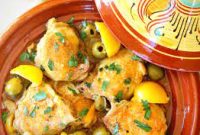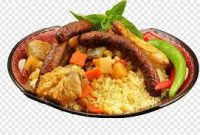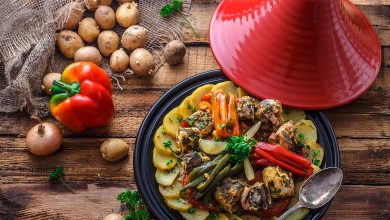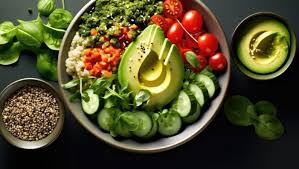A Culinary Journey Through Moroccan Cuisine: Flavors, Traditions, and Cultural Significance
Moroccan cuisine
Introduction
Moroccan food has developed over centuries into a complex tapestry of flavors, scents, and cultural influences. Morocco is a country whose varied history and geographical position are reflected in its gastronomic landscape, which is situated at the intersection of Africa, Europe, and the Middle East. This essay delves into the rich world of Moroccan food, looking at its distinctive ingredients, classic recipes, and the cultural importance of food in Moroccan culture.
Geographical and Historical Influences on Moroccan Cuisine
Morocco’s topography and history are profoundly reflected in its food. With the Atlantic and Mediterranean coasts, as well as the Atlas Mountains running through the middle of the nation, Morocco has a varied environment, which affects the availability of ingredients. The culinary traditions of Morocco have been profoundly influenced by their historical encounters with Arabs, Moors, Berbers, and French and Spanish colonators.
Key Ingredients in Moroccan Cuisine
Moroccan food is well known for its strong, fragrant tastes, which are frequently produced by combining unusual spices and ingredients. Among the essential elements that characterize Moroccan cuisine are:
- Spices: The use of spices is a characteristic seen in Moroccan food. Paprika, saffron, cinnamon, cumin, and coriander are just a handful of the spices that give Moroccan food variety and depth.
- Couscous: Couscous is a versatile and healthy grain that is used as a foundation for many different recipes and is a mainstay in Moroccan cuisine. It is frequently served steamed alongside flavorful stews.
- Tagines: Meat, vegetables, and a variety of spices are combined in slow-cooked stews called tagines, which derive their name from the unusual clay pot they are cooked in.
- Preserved Lemons and Olives: Moroccan cuisine gains a distinct flavor from the traditional practices of growing olives and preserving lemons in salt and water.
- Argan Oil: Argan oil, which is made from the Moroccan-native argan tree, is a tasty and nourishing oil that can be used in both savory and sweet recipes.
Traditional Moroccan Dishes
- Couscous with Seven Vegetables: Couscous with seven vegetables, a traditional Moroccan meal, is a filling and tasty concoction of couscous, seasonal vegetables, and a spice-infused broth.
- Tagine of Lamb with Apricots: Tender lamb, dried apricots, almonds, and a mixture of spices are combined in this sweet and savory tagine to create a flavorful and fragrant dish.
- Harira Soup: Harira soup is a robust concoction of tomatoes, lentils, chickpeas, and other spices that is frequently consumed during Ramadan to break the fast.
- B’stilla (Pastilla): B’stilla, a holiday delicacy, is a savory-sweet pie composed of layers of thin pastry, spiced meat (often chicken or pigeon), and cinnamon and powdered sugar sprinkling.
- Moroccan Mint Tea: A common beverage offered all day long, mint tea is a representation of Moroccan hospitality. Sugar, fresh mint leaves, and green tea are the ingredients.


Cultural Significance of Moroccan Cuisine
Moroccan food is more than just a means of sating hunger—it is an integral part of Moroccan social life and culture. A vital component of hospitality and creating a sense of community is the act of cooking and sharing meals. Moroccan cuisine is regarded as an art form that is passed down through the centuries, and families frequently get together to enjoy meals.
Food becomes even more significant on special occasions and during festivities. Festive feasts showcasing the variety and depth of Moroccan cuisine are prepared for weddings, religious holidays, and family get-togethers. With big platters in the middle of the table for everyone to share, the social side of dining is honored.
In addition, the meticulous preparation and serving of mint tea during the traditional Moroccan tea ritual represents friendliness and hospitality. The ceremony plays a crucial role in social relations by bringing people together to connect and exchange tales.
Tourism and the Global Recognition of Moroccan Cuisine
Moroccan gastronomy has become more well-known worldwide in recent years, drawing both visitors and foodies. Moroccan food has become a global culinary favorite due to its distinctive taste combination, eye-catching presentation of meals, and appeal of the vivid spices.
Moroccan-inspired cuisine can now be found in restaurants all over the world, and foodies are searching for authentic Moroccan flavors in their own homes. In addition to helping Morocco’s culinary diplomacy, the cuisine’s widespread appeal has opened doors for cross-cultural dialogue and understanding.


Conclusion
The unique tapestry of history, geography, and culture that characterizes Morocco is reflected in its food. Moroccan food, with its vivid tastes, fragrant spices, and shared eating customs, has captured the attention of diners all over the world. Moroccan cuisine is nevertheless a source of pride and a potent tool for cross-cultural dialogue and mutual understanding as the country navigates the opportunities and difficulties posed by the international scene. Savoring Morocco’s many and delicious cuisines is like taking a gastronomic voyage that exposes not just the nation’s delicacies but also the friendliness, kindness, and cultural depth that characterize Moroccan culture.




